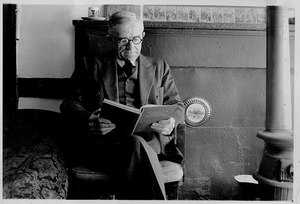 The beguines? Indeed, a good question. I have only heard of the beguines in a school a decade ago and thought nothing more of them. The beguines are a group of women who're not nuns bound by vows, but lived in community and wore a habit. A lay movement from the 12th century. The women who followed the beguine way of life were united in the common life, in prayer, in mission, that is, they had a life of living of the gospel in service of humanity.
The beguines? Indeed, a good question. I have only heard of the beguines in a school a decade ago and thought nothing more of them. The beguines are a group of women who're not nuns bound by vows, but lived in community and wore a habit. A lay movement from the 12th century. The women who followed the beguine way of life were united in the common life, in prayer, in mission, that is, they had a life of living of the gospel in service of humanity. Recently in Catholic Laity Category
 The beguines? Indeed, a good question. I have only heard of the beguines in a school a decade ago and thought nothing more of them. The beguines are a group of women who're not nuns bound by vows, but lived in community and wore a habit. A lay movement from the 12th century. The women who followed the beguine way of life were united in the common life, in prayer, in mission, that is, they had a life of living of the gospel in service of humanity.
The beguines? Indeed, a good question. I have only heard of the beguines in a school a decade ago and thought nothing more of them. The beguines are a group of women who're not nuns bound by vows, but lived in community and wore a habit. A lay movement from the 12th century. The women who followed the beguine way of life were united in the common life, in prayer, in mission, that is, they had a life of living of the gospel in service of humanity.  Catholics who don't know the names of Peter Maurin (1877-1949) and Dorothy Day (1897-1980) ought to do some research. These two, I am becoming more convinced, are true holy people that we can reliably follow. That is, they will lead us to Christ. But don't be fooled: neither are easily understood given what we face today, nor are they lukewarm about the Catholic faith they wholeheartedly embraced and lived.
Catholics who don't know the names of Peter Maurin (1877-1949) and Dorothy Day (1897-1980) ought to do some research. These two, I am becoming more convinced, are true holy people that we can reliably follow. That is, they will lead us to Christ. But don't be fooled: neither are easily understood given what we face today, nor are they lukewarm about the Catholic faith they wholeheartedly embraced and lived.
Today is the 7th anniversary of death of Adé Béthune, a renowned artist and liturgical scholar of Newport, Rhode Island. Much of her influence was known through the Saint Leo League --an organization to assist the laity and the clergy to live the sacred Liturgy more fully. Out of the Saint Leo League came the publication, Sacred Signs, which published a quarterly review of articles on the liturgical arts (iconography, book reviews, articles, parish helps, museum notes; Sacred Signs is timely now as it was when still in print. She had a passion for liturgical art and sacred music, especially Gregorian Chant.
Adé was an Oblate of Saint Benedict of the Abbey of Saint Gregory the Great - Portsmouth, where she is buried in the abbey cemetery. When I was at the abbey recently I made a special point in visiting her grave to offer a prayer for her.
The collection of her artist work and intellectual work is held at The College of Saint Catherine (St. Paul, MN).
You can read the Catholic Worker obit for Adé and the Time Magazine piece on Adé's work in 1962.
May she rest in
peace.
"Vocation and mission of the laity in the Church and society. Twenty years since Christifideles Laici:
balance and perspectives".
 The first encounter on February 28th will be particularly dedicated to the "Ecclesiology of
The first encounter on February 28th will be particularly dedicated to the "Ecclesiology of "To be Christian lay people, it must often be reminded, is a true and specific vocation. It is a calling. It is also a mission--be it in the Church, within our Christian communities, be it above all in the world. A Christian lay person is evangelical yeast, is the light of the world, the salt of the earth. This is his vocation. (...) To be Christian lay people today, to be coherent Christians, at times requires not little courage, requires going against the tide. Our dicastery tries to encourage and help the laity to live their vocation in a courageous, convincing and persuasive manner."


